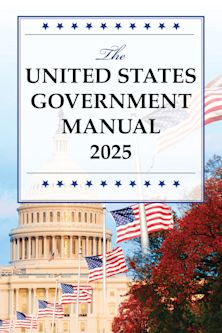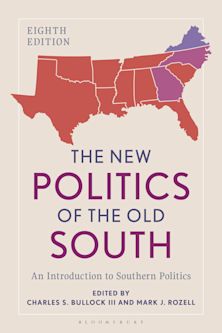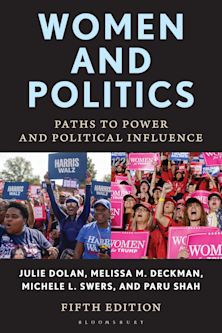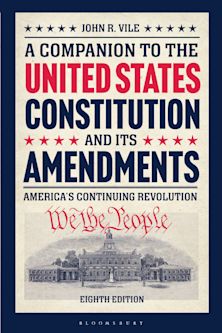- Home
- ACADEMIC
- Politics & International Relations
- American Government and Politics
- Transparency and Secrecy
Transparency and Secrecy
A Reader Linking Literature and Contemporary Debate
Transparency and Secrecy
A Reader Linking Literature and Contemporary Debate
You must sign in to add this item to your wishlist. Please sign in or create an account
Description
Gaining access to government information is a perpetual concern of citizens. This is due in large part to the relationship between transparency and the issues of ethics, corruption, administrative malfeasance, and accountability. The last few years have proven that governmental transparency is a burgeoning academic subfield spurred on by contemporary political events and attention generated by the popular press. This reader addresses the topics of governmental transparency and secrecy and includes original discussion, classic readings, and primary source documents. Transparency and Secrecy is organized according to a theoretical model fully developed in the introduction. Governmental transparency is the degree to which access to government information is available through various channels. These avenues of access to information include governments proactively releasing information, freedom-of-information type requests, open meetings, and whistleblowing and leaks. The reader addresses each of these components as well as values that compete with openness such as privacy, security, and efficiency.
The chapter discussion sections begin with the presentation of cases to make the material relevant to students. The cases together with the review of the literature help readers understand how each aspect of transparency is relevant to contemporary public policy debates. The discussion sections include a brief summary of the included articles and place these readings within the scholarship at large. Integrative study questions, suggested class projects, recommendations for case studies, movies, and supplemental reading all make Transparency and Secrecy ideal for classroom adoption.
Table of Contents
Part 2 Part 1-What Is Transparency?
Chapter 3 The Power Position of the Bureaucracy
Chapter 4 Administrative Secrecy: A Congressional Dilemma
Chapter 5 Claude Reyes et al. v Chile
Chapter 6 Memorandum for the Heads of Executive Departments and Agencies. Subject: Transparency and Open Government
Part 7 Part 2-Transparency and Competing Values: Privacy, Security, and Efficiency
Chapter 8 The Right to Privacy
Chapter 9 Privacy Rights and Protection: Foreign Values in Modern Thai Context
Chapter 10 National Security and Open Government in the United States: Beyond the Balancing Test
Chapter 11 Governmental Transparency in the Path of Administrative Reform
Part 12 Part 3-Freedom of Information
Chapter 13 Article 6 of Mexican Constitution
Chapter 14 Outsourcing the Constitution and Administrative Law Norms
Chapter 15 A Partial Revolution: The Diplomatic Ethos and Transparency in Intergovernmental Organizations
Part 16 Part 4-Proactively Released Information
Chapter 17 The Evolution of E-Government among Municipalities: Rhetoric or Reality
Chapter 18 Mr. Justice Brandeis and the Creation of the Federal Register
Chapter 19 At the Intersection of Bureaucracy, Democracy, and the Media: The Effective Agency Spokesperson
Part 20 Part 5-Open Public Meetings
Chapter 21 Open Meeting Statutes: The Press Fights for the 'Right To Know'
Chapter 22 The Democratic Legitimacy of the European Union Committee System
Chapter 23 Critical Factors for Enhancing Municipal Public Hearings
Part 24 Part 6-Whistleblowing and Leaked Information
Chapter 25 Whistleblowing and Leaks
Chapter 26 The Enduring Phenomenon of Moral Muteness
Product details
| Published | Jul 17 2010 |
|---|---|
| Format | Ebook (PDF) |
| Edition | 1st |
| Extent | 222 |
| ISBN | 9798216318330 |
| Imprint | Lexington Books |
| Publisher | Bloomsbury Publishing |
About the contributors
Reviews
-
This is a very important and necessary book. Democratic governments require transparency-and, in some contexts, secrecy as well. Professor Piotrowski, a leading researcher on transparency issues and author of Governmental Transparency in the Path of Administrative Reform, has put together an excellent, highly readable, and balanced collection of materials that will enable students and scholars alike to analyze clearly questions of governmental transparency and secrecy from the municipal to multi-national governmental levels. The book fills a major void in the extant literature and is eminently appropriate for courses in public administration, political science, and journalism.
David H. Rosenbloom, City University of Hong Kong; American University
-
This new volume edited by Suzanne Piotrowski is more than the 'reader' modestly claimed by the title. Piotrowski has brought together a collection of key materials dealing with the tension between transparency and secrecy and provided her own interpretive comments, discussion questions, suggested classroom assignments, cases, and additional readings. Piotrowski develops the meanings of the key terms, historical contexts, and ethical quandaries that surround this extremely important area of concern in modern democratic government. This much-needed work fills a major gap in our literature for engaging students and will also be appreciated by scholars, practitioners, and thoughtful members of the public.
Terry L. Cooper, University of Southern California
-
Transparency is one of the most important topics in contemporary debates about good governance. This is the first reader that canvasses the subject thoroughly. This volume is an outstanding resource for teachers and students.
Alasdair S. Roberts, Suffolk University Law School


































